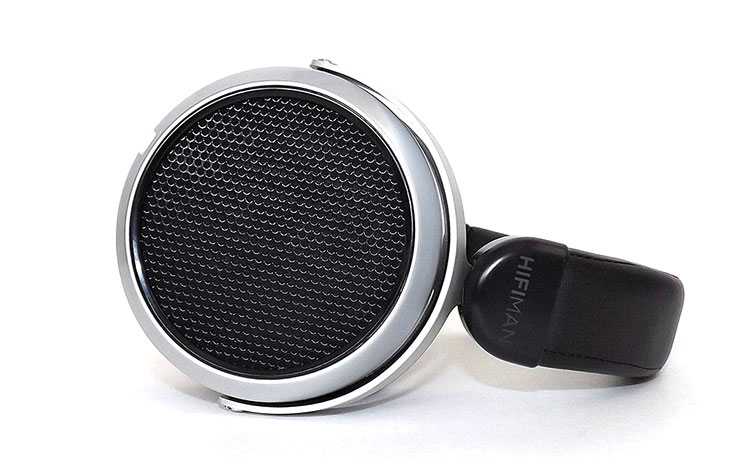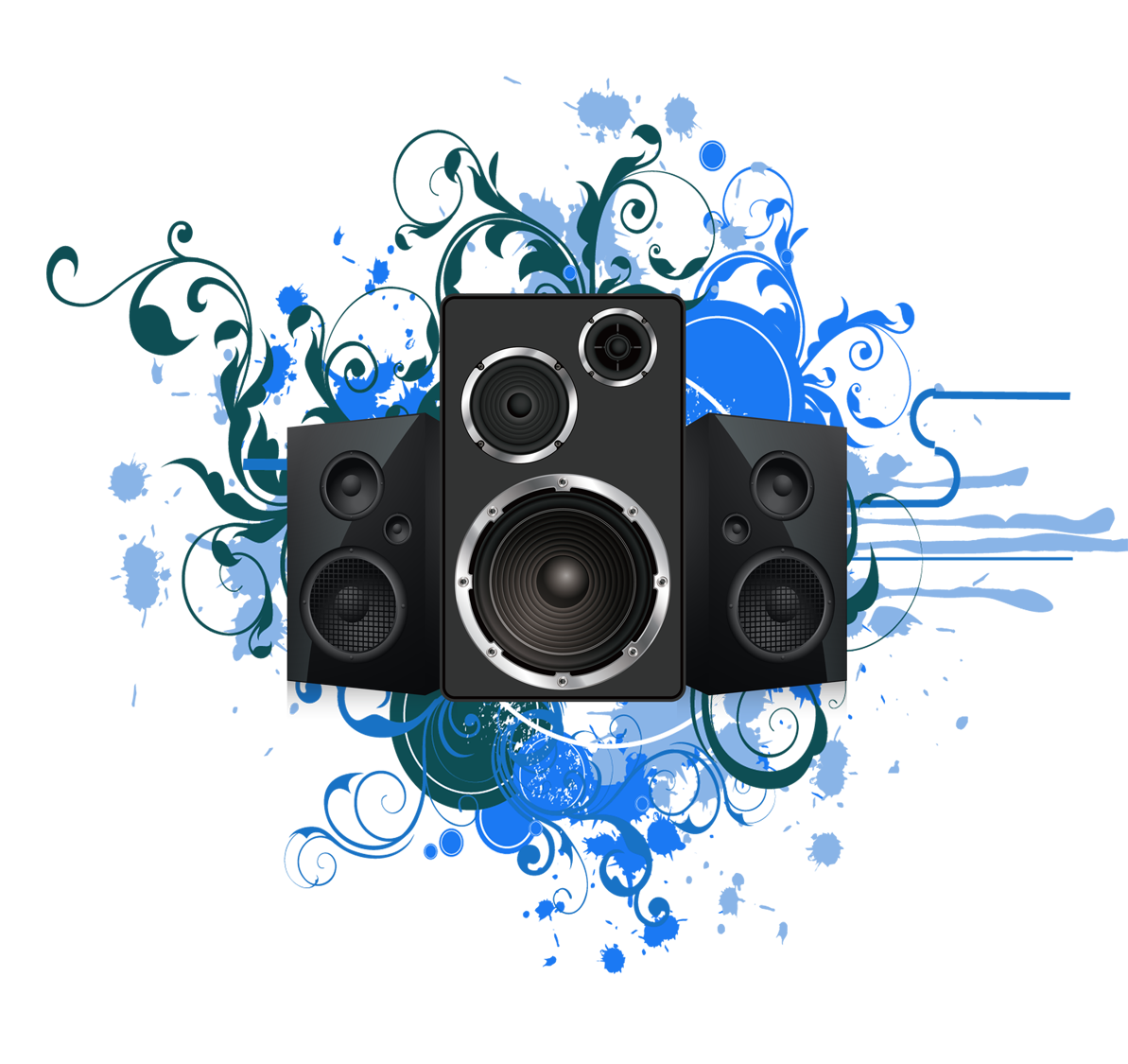Sound
The sound of the HE400se can be simply described as a neutral headphone with entry level technical performance. There is a bit of peak in the mid treble that makes it seemingly bright and off-sounding to me. If you’re looking to buy the HE400se to try some sort of “planar magic”, I’d suggest looking elsewhere. There’s nothing particularly special about its sound outside of being well tuned. One thing to note is that you will need a desktop amp or a very beefy portable one. It needs more power than the Sennheiser HD6X0 series and it definitely sounds better when given adequate power.Measurement of the HiFiMan HE400se on an industry standard GRAS 43AG measurement rig. The dotted black line represents the Harman target, a reference frequency response developed using consumer preferences. The blue line is how the headphone in question measures. Effectively, this shows how significantly the headphone’s frequency response deviates from the target. Note however that the target is highly smoothed and strict adherence to the Harman target is not necessary for a headphone to sound good.
Bass
The bass of the HE400se is flat with the typical minor subbass roll-off around the 40 Hz mark. Despite not having a bass boost as suggested by the Harman target, I don’t find the HE400se to be anemic or overly lacking in bass quantity. There’s enough here to fill out the body of bassier instruments like the floor toms.
The bass quality is the more interesting topic. When it comes to planar headphones, there’s often talk about planar bass. This generally refers to the idea that planar headphones are known for having a sense of speed and articulation to its sound. Whatever it is, the bass of the HE400se doesn’t sound too far off from a regular dynamic driver. The primarily difference is that the decay of bass notes are just a little too quick. While the attack is tight, it isn’t particularly fast and has a slight bluntedness to it. These characteristics are most noticeable with the drums as you listen to how the snare, kick, and toms are rendered. That said, this doesn’t necessarily make the HE400se’s bass bad. The amount of control it has here is quite commendable. Though it may not have amazing resolution, it rarely ever gets bogged down or congested even in busy tracks.
Mids
Like the bass, the lower mids of the HE400se are basically flat. Nothing much to be said here. Like many HiFiMan headphones, the pinna gain (upper mids) of the HE400se only start to rise after the 2 kHz mark. Generally speaking, a rise starting after 1 kHz is more in line with the ideal pinna gain in headphone target curves. I find that this has the effect of giving the tonality of the upper mids a forward slant to it instead of a fuller, smoother tone. As such, the upper mids can come off as slightly dry. My guess is that the upper harmonics are effectively backloaded unto the 3 – 4 kHz region. Vocals and electric guitars show this off the best. I’m not complaining though. I do like the mids of the HE400se as it has a lot of clarity here.
Treble
The treble of the HE400se is good if unremarkable for the most part. One pain point is a small mid-treble peak around 7 kHz. This peak does occasionally make it sharp and sibilant but not too much of a concern. My real complaint is that this peak has the effect of making the hats/cymbals sound tizzy, especially when combined with the “dryness” of the HE400se’s timbre. These notes don’t sound complete; the crisp initial attack and subsequent shimmer are masked as the peak emphasizes the middle part notes where the hats/cymbals rings outs. It can sometimes come off as a little incoherent on certain recordings as notes start to blend into each other in a cheap, thrashy sort of way. This makes the HE400se’s treble seem brighter than it really is.
Media
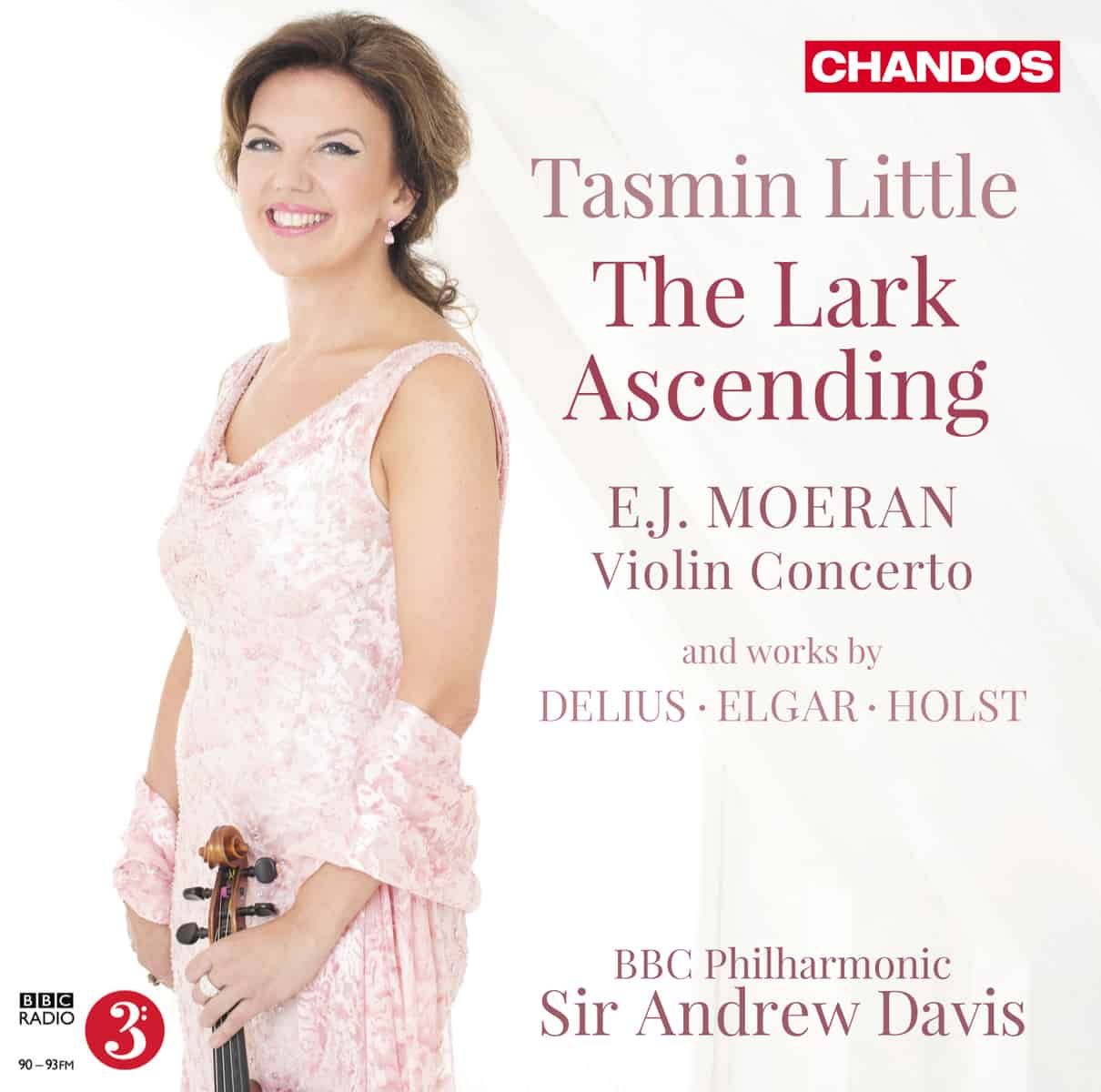
Tasmin Little – The Lark Ascending (2013)

Flying Lotus – Until The Quiet Comes (2012)

Toonorth – Aftersome (2021)
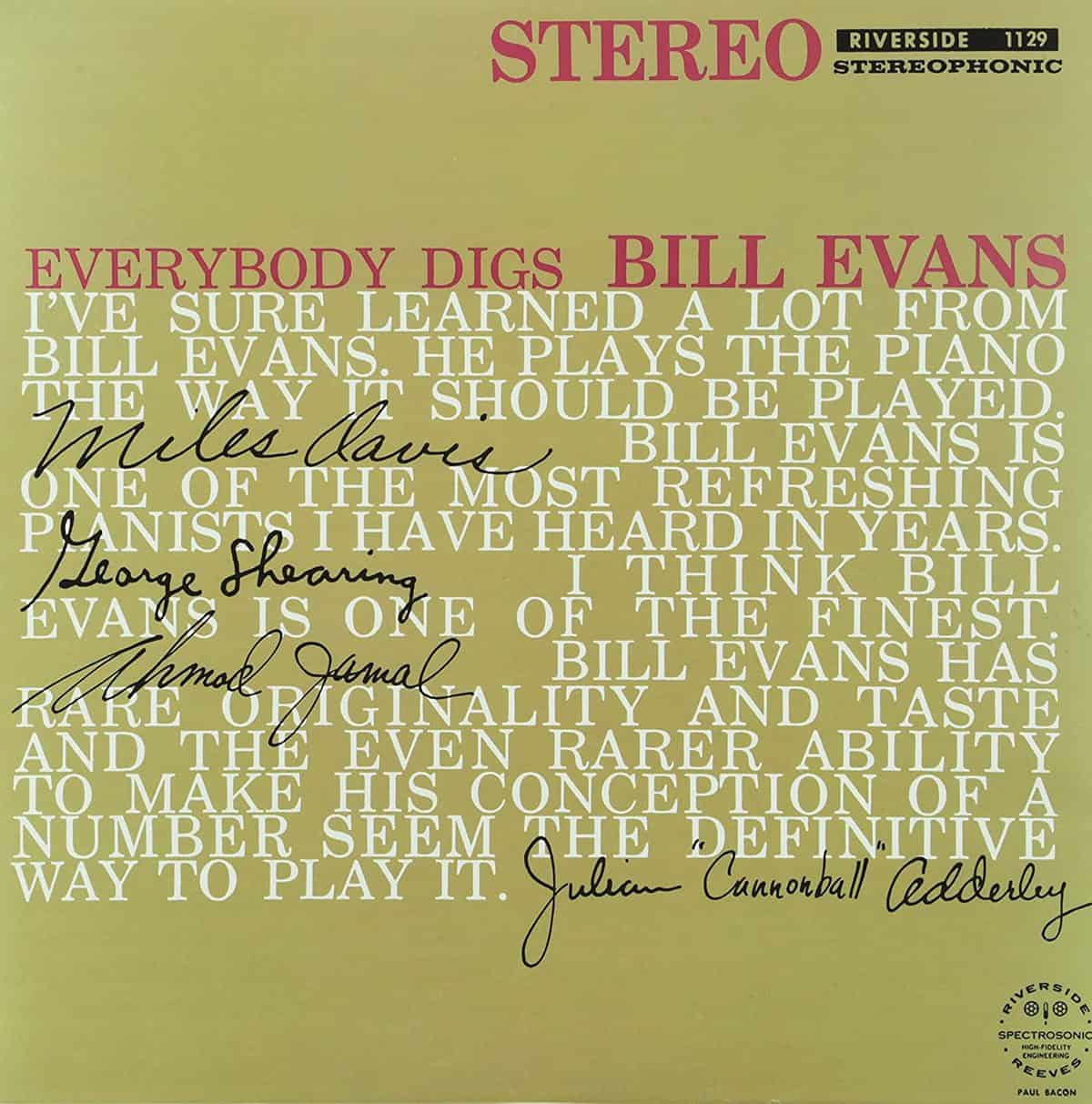
Bill Evans – Everybody Digs Bill Evans (1959)
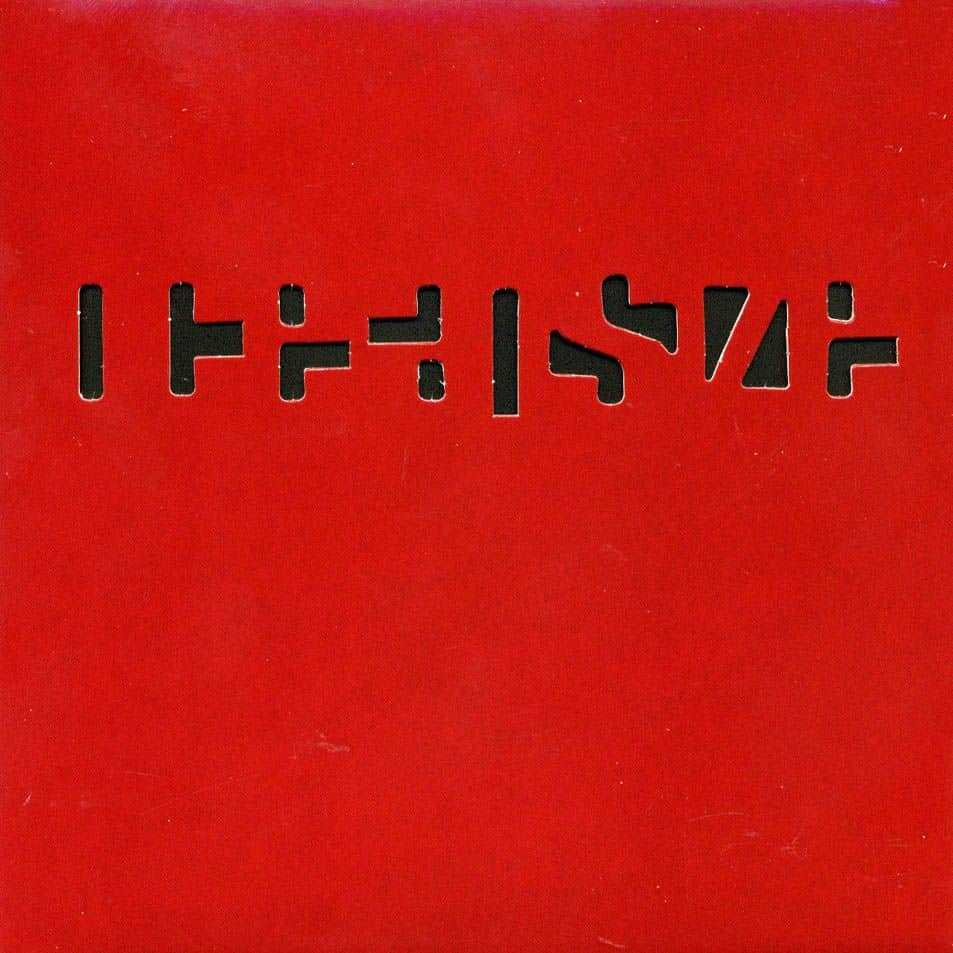
Oceansize – Frames (2007)
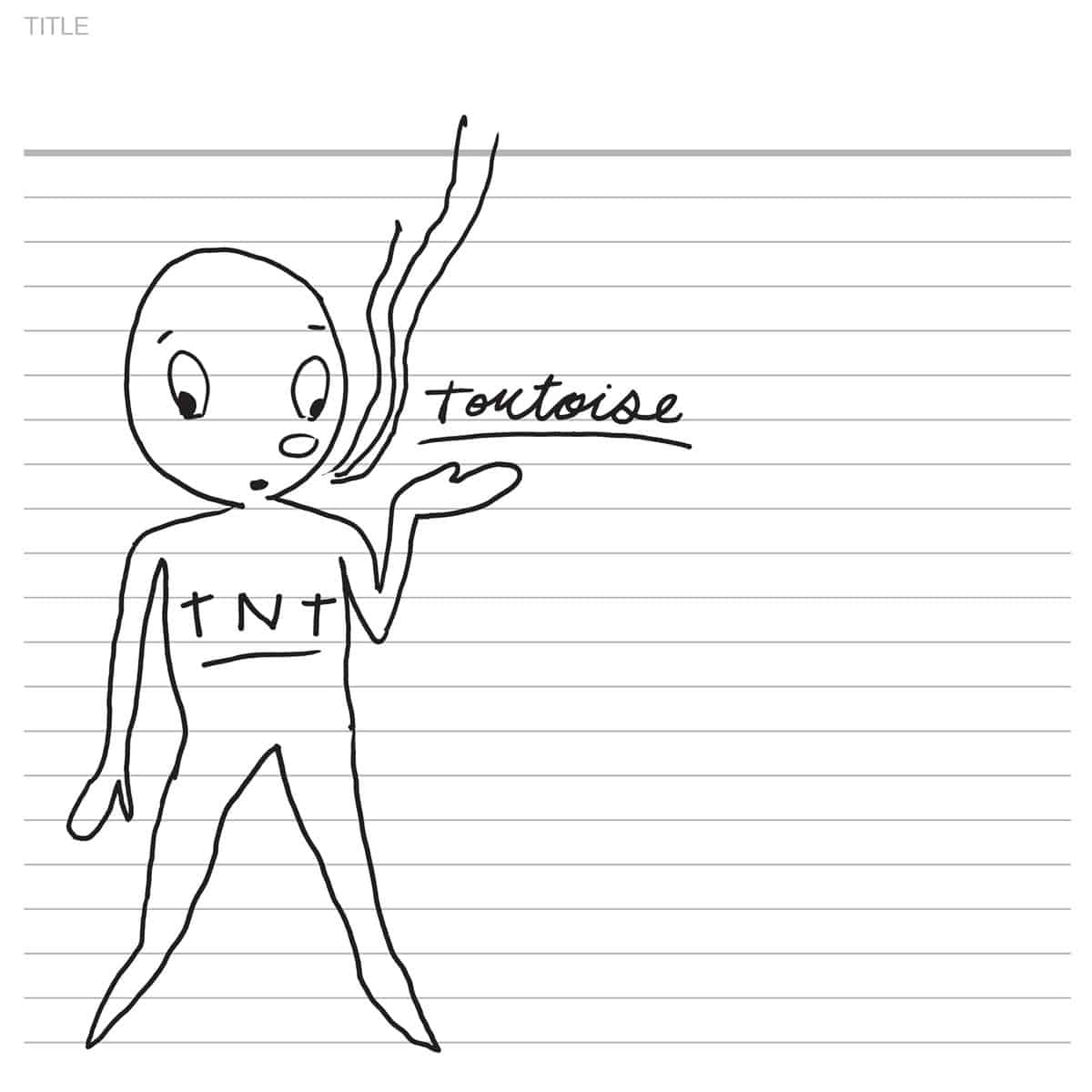
Tortoise – TNT (1998)
Papa M – Whatever, Mortal (2001)
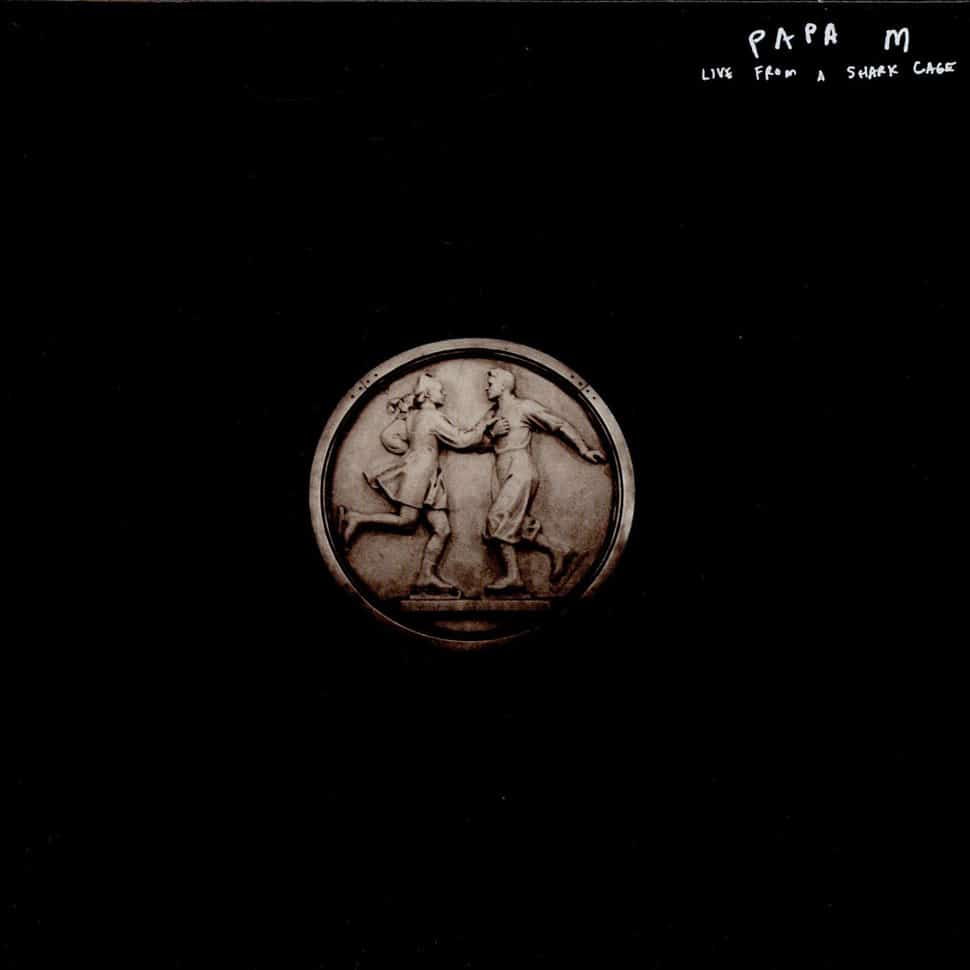
Papa M – Live From A Shark Cage (1999)
Papa M – Hole Of Burning Alms (2004)
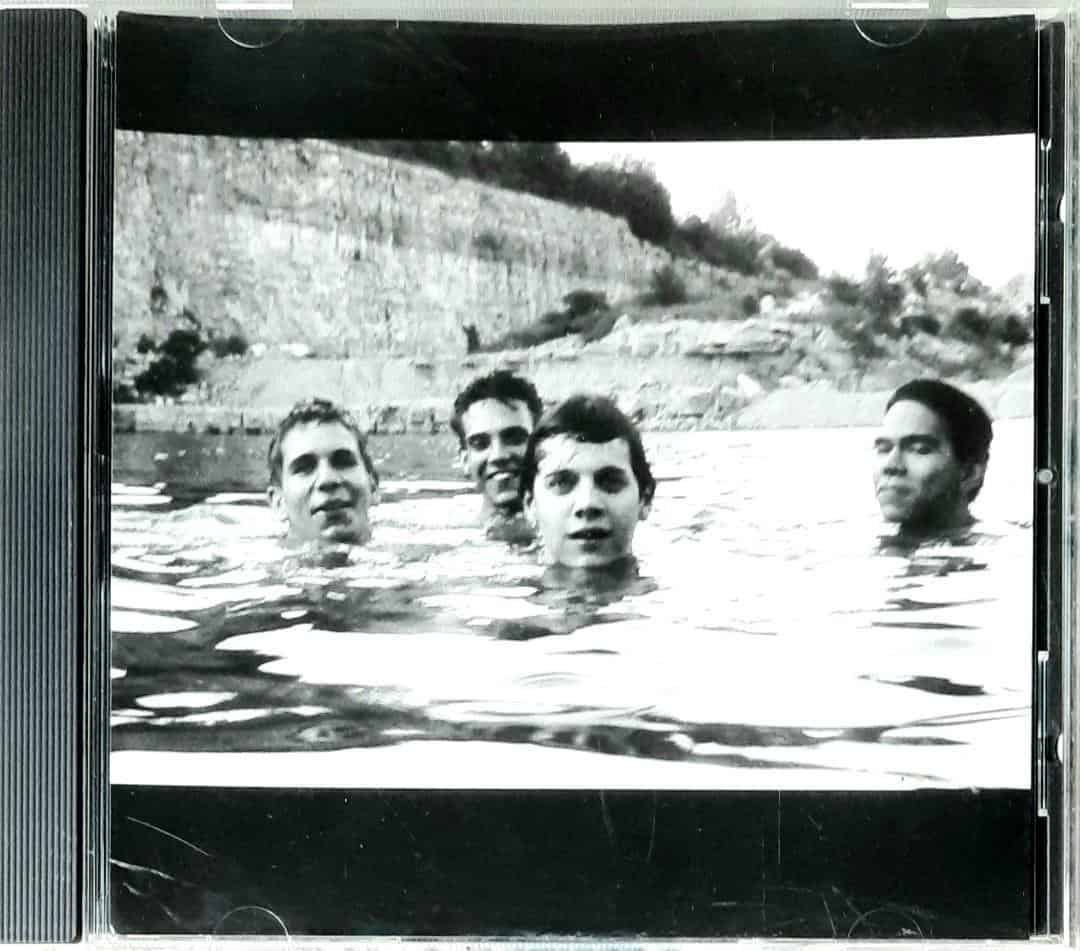
Slint – Spiderland (1991)

Papa M – Papa M Sings (2001)

Papa M – A Broke Moon Rises (2018)
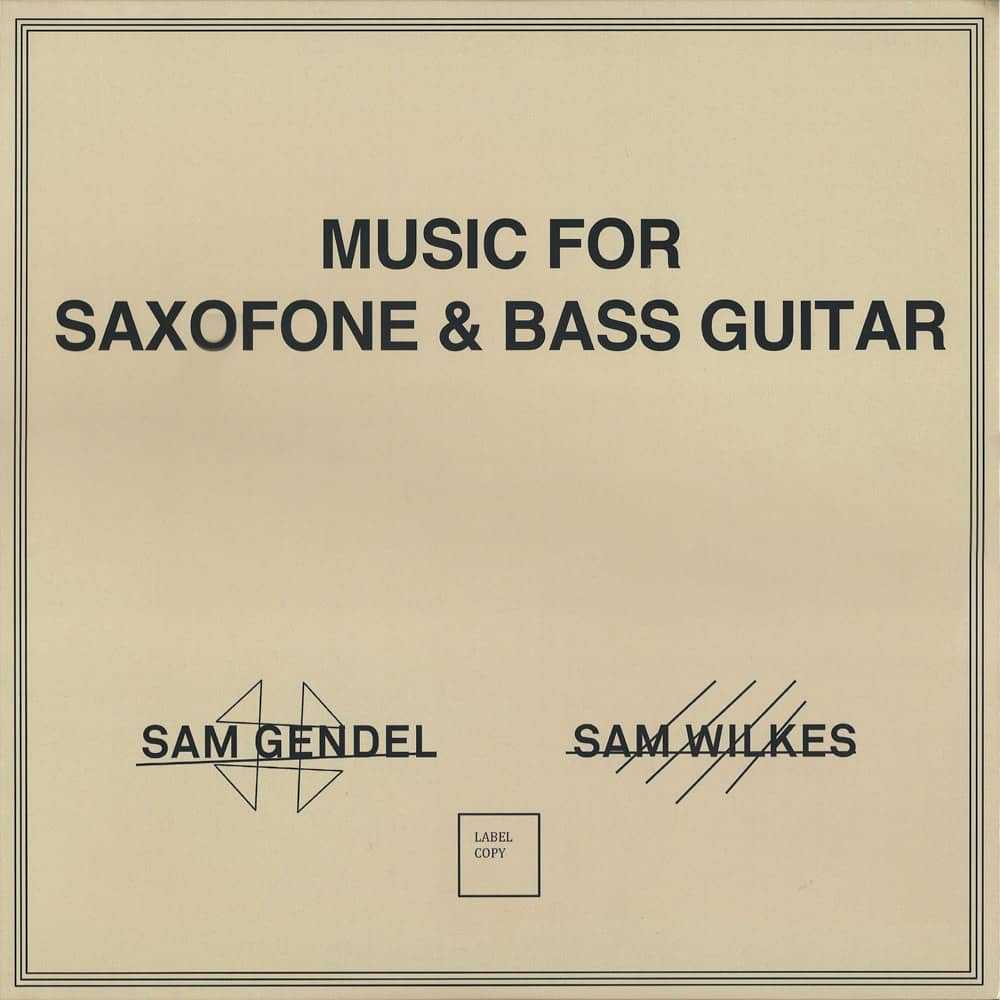
Sam Gendel, Sam Wilkies – Music for saxophone & bass guitar (2018)

Meitei – Komachi (2019)

Papa M – Highway Songs (2016)

Pajo – Pajo (2005)

M83 – Hurry Up, We’re Dreaming (2011)

M83 – Saturdays = Youth (2008)

Trans Am – Surrender To The Night (1997)

slenderbodies – Are We? (2021)

Henry Green – Half Light (2018)

St. South – Nervous Energy (2016)

Flor – Ley Lines (2019)

Great Good Fine Ok – III (2017)

Great Good Fine OK – Great Good Five OK (2021)

vbnd – scum funk (2021)
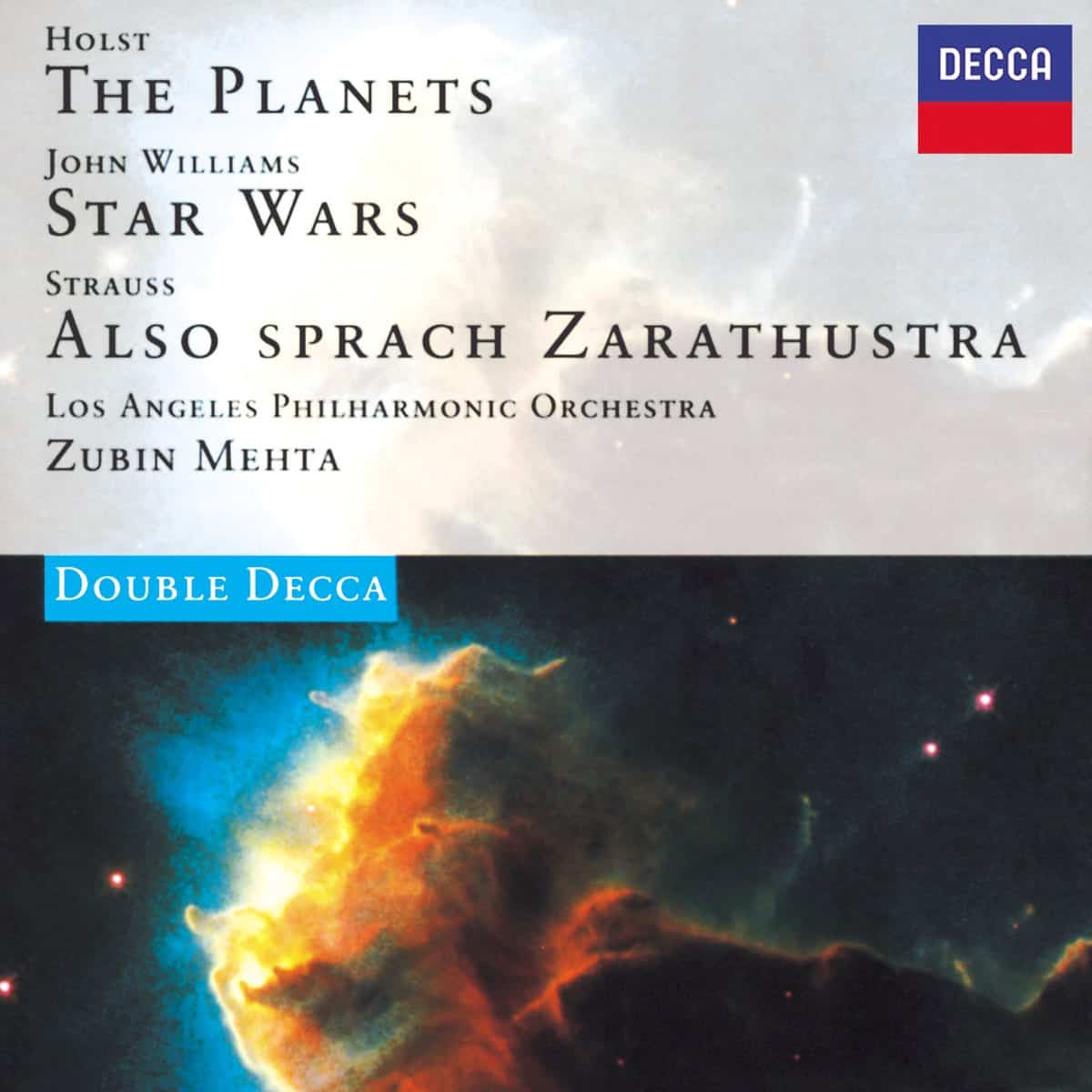
Gustav Holst, John Williams, Strauss, Sprach Zarathustra, Los Angeles Philharmonic Orchestra – the Planets (1997)
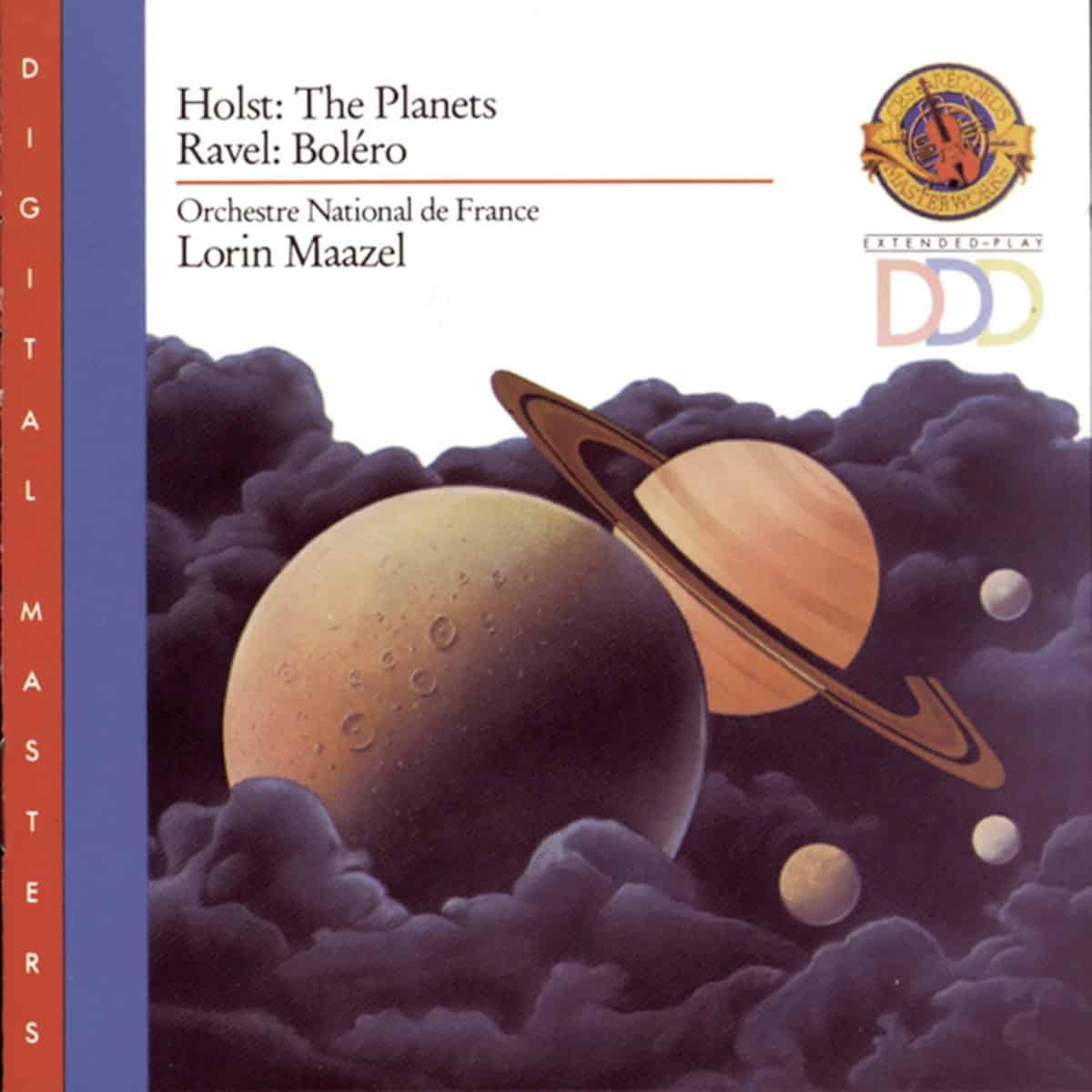
Gustav Holst, Lorin Maazel, and Orchestre National de France – The Planets (1982)
slenderbodies – Fabulist (2017)

Henry Green – Shift (2018)

Aquilo – Silhouettes (2017)

Ford. – The Color Of Nothing (2020)

Ford. – (The) Evening (2018)

Amber Rubarth – Sessions From The 17th Ward (2012)
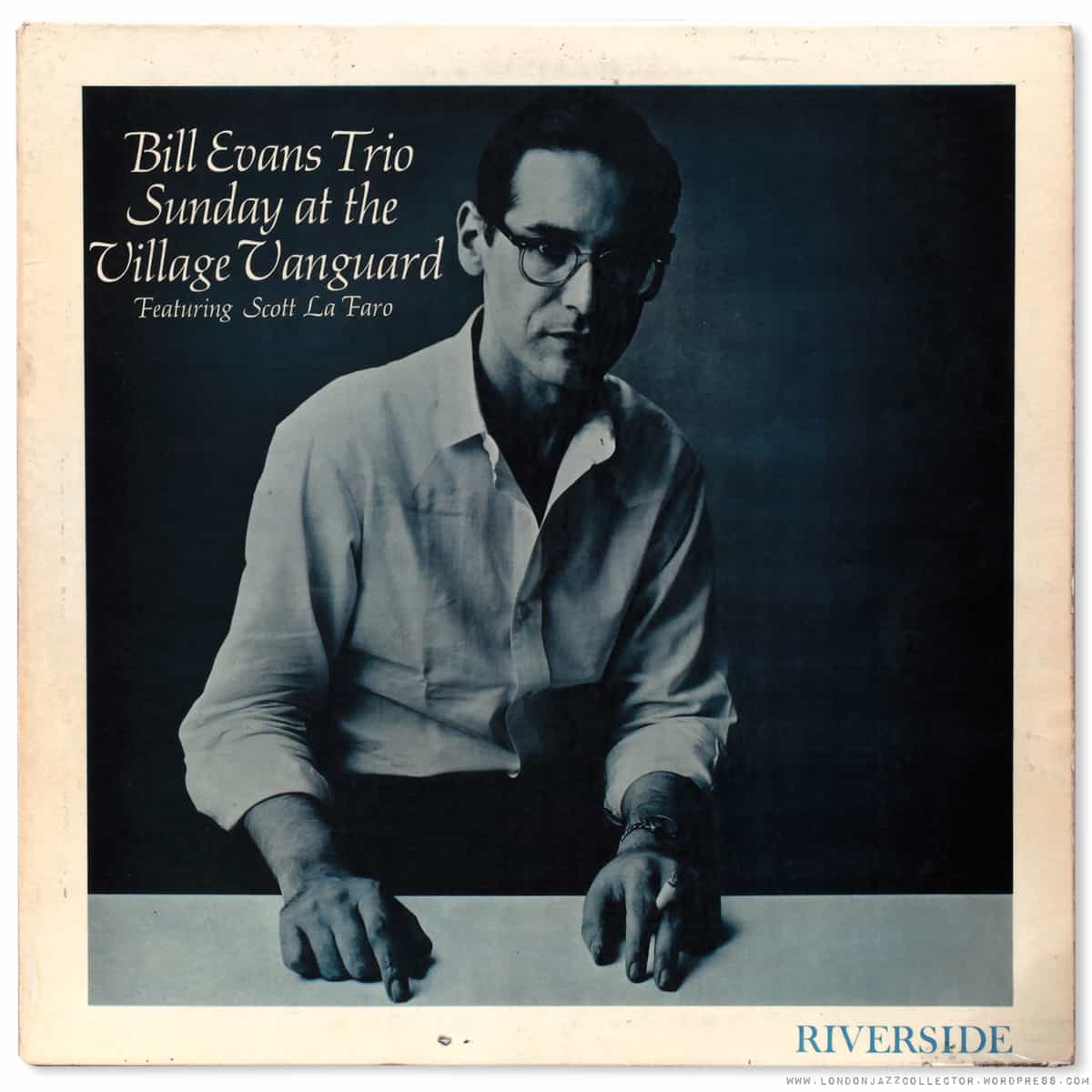
Bill Evans – Sunday At the Village Vanguard (1961)

Bill Evans – Live At the Montreaux Jazz Festival (1968)

Shallou – Magical Thinking (2020)

Sufjan Stevens – A Beginner’s Mind (2021)
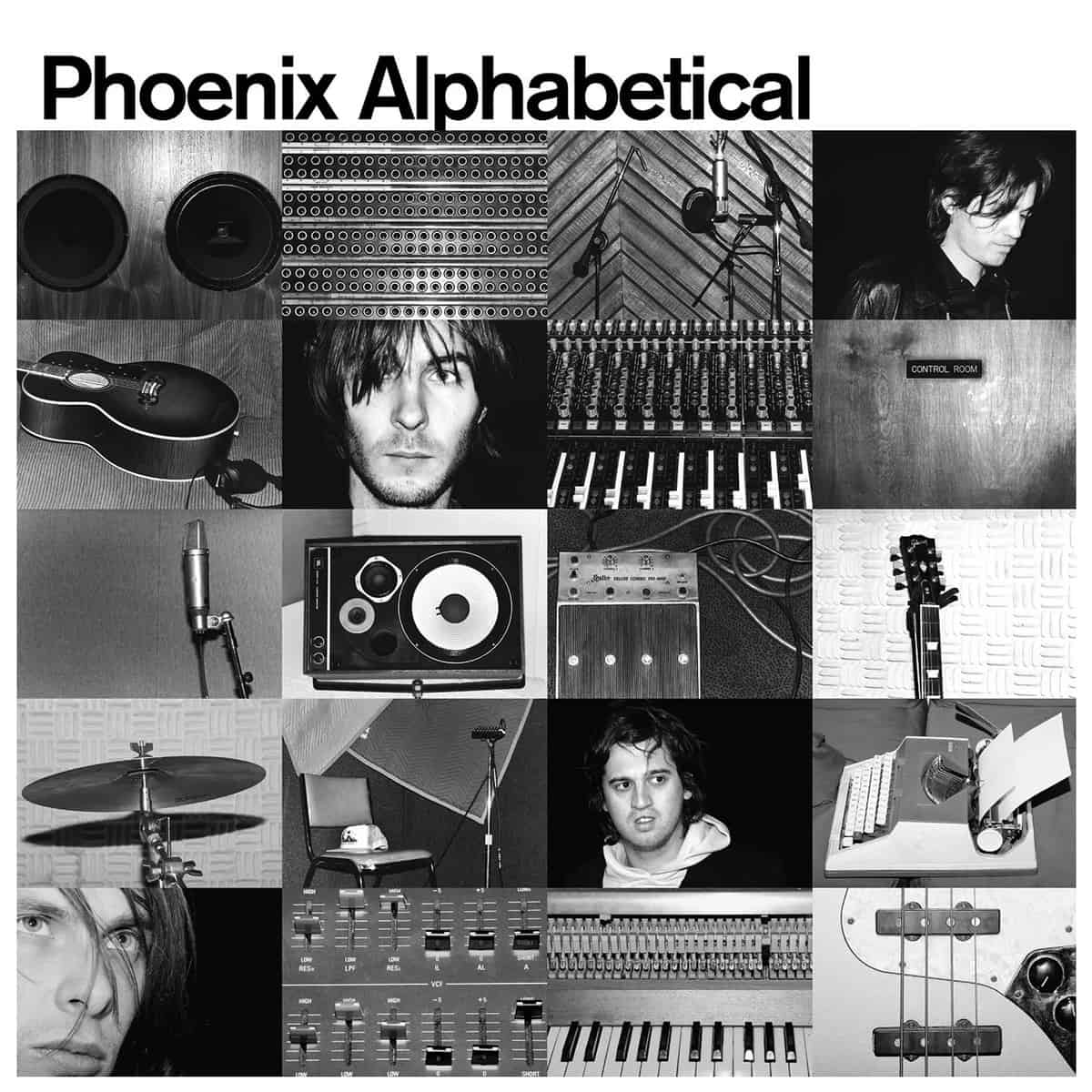
Phoenix – Alphabetical (2004)
Звук
Для прослушивания использовалось следующее оборудование.
- NuPrime DAC-10H и Resonessence Labs Concero HP в роли ЦАП и усилителя
- Apple MacBook Pro Retina 2013 в роли источника
- Fidelia в роли плеера
- Fiio X7 и Luxury&Precission L5Pro в роли портативных плееров
- Записи высокого разрешения в Lossless-форматах (Dr. Chesky The Ultimate Headphone Demonstration Disc и другие)
Перед прослушиванием наушники были прогреты на протяжении 48 часов.
Оценивать эти наушники достаточно интересно. С одной стороны, чуда не произошло, и в HE-400S нет того, что ожидаешь от изодинамических моделей HiFiMan после многолетнего знакомства с ним, звучат они ближе к традиционным динамическим моделям. Судя по весу, HiFiMan ещё сильнее упростили магнитную систему этих наушников, что слышно по звуку. С другой стороны, HE-400S звучат как очень хорошие динамические модели, и явно оправдывают свою цену.
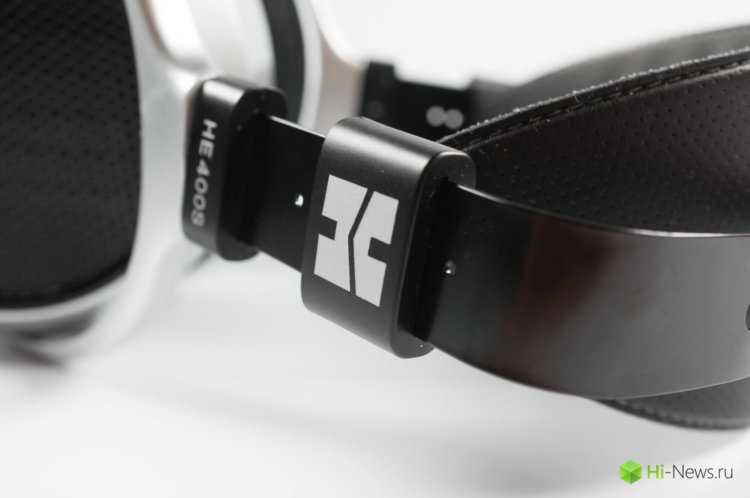
Средние частоты — самая сильная сторона этих наушников. Именно в этом диапазоне изодинамический излучатель всё-таки показывает себя, и наушники обходят по скорости динамические модели сходной цены. При этом они не пытаются выдавать себя за нейтральную модель с диким разрешением, как их старшие братья, в подаче HE-400S чётко слышится смягчение, призванное скрывать огрехи записей и источников. Именно такой окрас обычно любят ошибочно называть «ламповым» и «мультибитным», он во многих случаях весьма приятен и делает звук комфортным. При этом на верхних СЧ есть небольшие следы шероховатости, похожие на пик в области 2-4 кГц, хотя замеры АЧХ, доступные в интернете, показывают, что никакого криминала там нет, но на слух это слышно. Воображаемая сцена наушников где-то чуть больше среднего по ширине и средняя в глубину, наушники нормально для своей цены справляются с разделением планов и передачей объёма инструментов. У них нет характерной для многих «динам» манеры «сплющивать» инструменты, представляя их в виде точек, но до топовых изодинам HE-400S, конечно, далеко.
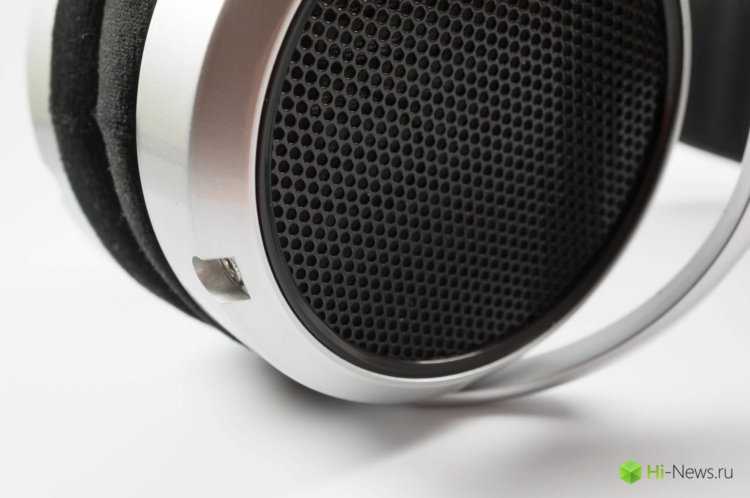
Верхние частоты обычно служат основным камнем преткновения, но в этой модели они почти идеальны, их не много, чтобы не порождать резкость, но и не мало, чтобы не сделать звук тёмным и замкнутым, так что резкими эти наушники найдут только совсем уж заядлые ВЧ-фобы. Очень неплохо подобрано количество ВЧ, нет каких-то заметных больших пиков и резонансов, все на соответствующем цене уровне. Конечно, ВЧ этой модели сильно упрощены по сравнению с более дорогими изодинамами, но сложно ожидать обратного в недорогой модели с чувствительностью, достаточной для смартфонов и планшетов.
Выше я уже писал о том, что эти наушники можно хорошо «прокачать», купив для них гибридные амбушуры Focus Pads. С ними HE-400S обретают больше глубокого баса, и плюс уходит тот пик в начале ВСЧ, хотя общая тональность смещается немного в сторону темноты. Сцена становится чуть уже, но на мой вкус это все равно выгодный обмен, тем более что Focus Pads ещё и меньше ворса собирают.
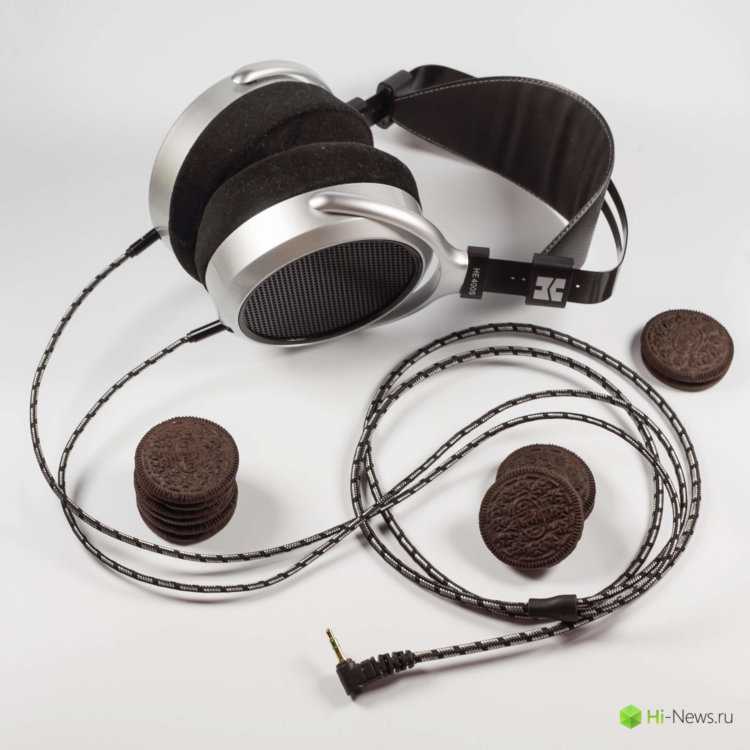
Gaming?
I have to say that even though the Soundstage here is a bit better than an HD600, I still found the 400se a bit claustrophobic for gaming. In other words, it wasn’t as open or spacious as a DEVA, SHP9500, Arya, or K702, and I was fairly surprised by that.
I will have to go back and double-check my findings, but I’d recommend any one of those headphones over the 400se if someone forced me to decide. That’s not to say that the 400se is bad per se, but I don’t feel nearly as comfortable with it in an FPS environment as I do with the others.
Even so, I will be revising my 5 Best Audiophile Headphones Under $500 to reflect the fact that overall I think the 400se is the best value in Mid-Fi. As in, it will certainly be replacing the 6XX as the #1 option.
If I somehow change my mind and the 6XX stays #1, The Sundara is most assuredly being replaced by the 400se regardless.
In my mind, it’s just too good of a product to pass up. It’s like they’re literally saying “Eh, you can have it. It’s on us!”
Not really, but you get the gist. When you’ve had as much experience as I’ve had in this hobby, $150 for these headphones seems like chump change.
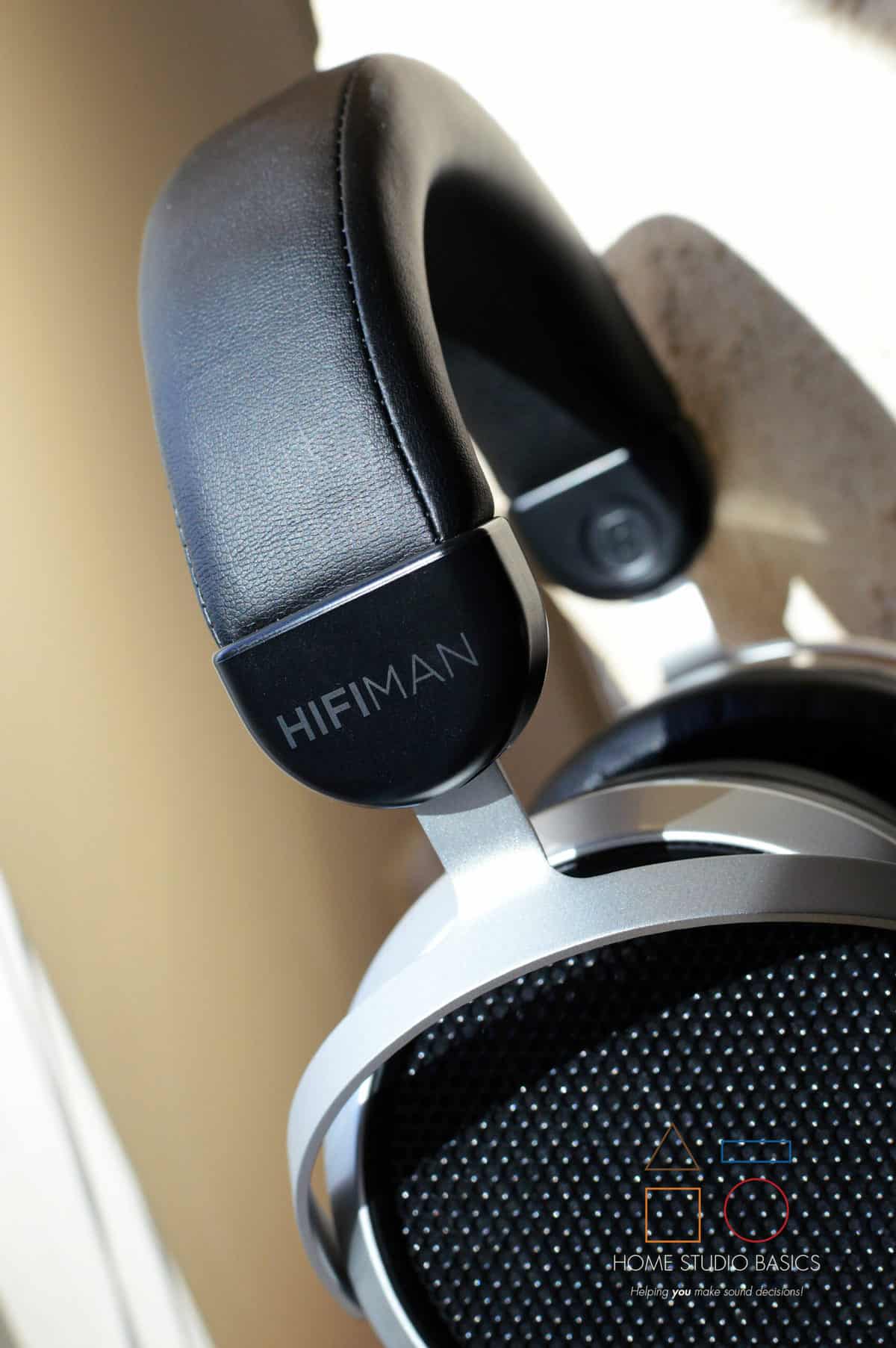
The HIFIMAN “experiment” has seen its ups and downs, make no mistake about it. They’ve screwed up a few times and it was a bit touch and go there for a while back in 2019.
But it seems like they genuinely care about improving their line and for that I applaud them.
So here’s to you, HIFIMAN. Now just fix the damn glue issue and you’ll be the greatest thing since sliced bread.
And I’m out!
Подключение
1.версия Bluetooth
Неизвестно. Помогите нам, предложите стоимость.
Bluetooth — это стандарт беспроводной технологии, который позволяет передавать данные между устройствами, расположенными в непосредственной близости, с использованием коротковолновых сверх высокочастотных радиоволн. Более новые версии обеспечивают более быструю передачу данных.
2.Могут быть использованы в беспроводном режиме.
HiFiMan HE400se
Беспроводные устройства предоставляют пользователям большую свободу движений при прослушивании.
3.Имеет Блютуз aptX
HiFiMan HE400se
Блютуз aptX — это аудиокодек, используемый для беспроводной передачи звука высокого разрешения с устройств с поддержкой Блютуз Разработанная Qualcomm, аудиотехнология aptX включает такие варианты, как aptX HD, aptX Low Latency и aptX Adaptive.
4.имеет 3,5 мм мини-джек
HiFiMan HE400se
Стандартный 3,5-мм разъем подходит для использования со всеми MP3-плеерами и компьютерными звуковыми картами.
5.максимальный радиус (Bluetooth) блютуз
Неизвестно. Помогите нам, предложите стоимость.
Устройство может подключаться к другому устройству на большом расстоянии с помощью Bluetooth/ИК излучения.
6.поддерживает Wi-Fi 6 (802.11ax)
HiFiMan HE400se
Wi-Fi 6, выпущенный в 2019 году, основан на стандарте беспроводной сети IEEE 802.11ax. Разработанный для работы во всех полосах частот от 1 до 6 ГГц, он предлагает более высокие скорости передачи данных и меньшую задержку по сравнению с предыдущими технологиями Wi-Fi.
7.Интерфейс 802.11ac WiFi
HiFiMan HE400se
Беспроводной 802.11ac работает на частоте 5 ГГц, а также на 2,4 ГГц (двухдиапазонный WiFi). Предлагает более высокую скорость передачи данных, повышенную надёжность и более оптимальный принцип энергопотребления. Даёт преимущества для игр и видеопотоков HD.
8.Интерфейс 802.11n WiFi
HiFiMan HE400se
802.11n — стандарт беспроводной связи, вышедший в 2009 г. Более высокая скорость передачи данных, повышенная безопасность по сравнению с его предшественниками a, b и g.
9.поддержка Bluetooth паринг используя NFC
HiFiMan HE400se
Данное устройство поддерживает Bluetooth паринг, используя технологию NFC для того, чтобы связываться с другими устройствами через Bluetooth. Вы можете быстро соединить устройства без введения кода, просто расположив одно устройство рядом с другим.
Detail Retrieval
You’ll start to hear the stuff on the right and left, or those backing instruments – the ones way in the back such as the one that plays during the chorus of Kevin Garrett’s “Factor In” around 1:46.
It kind of sounds like a high-pitched synthesizer, giving the song some extra atmosphere and wisp – but there’s also a clear melody to it; something I didn’t really notice as much in other dynamic headphones.
What I’m really getting at here is that the songs start to sound 100% complete with most everything being accounted for.
While you may get that last extra 1 or 2% with something like a Utopia, it’s probably not worth it unless the price is right like Bob Barker.
I’ve talked quite a bit about the Utopia and I still think it’s the best sounding dynamic headphone on the planet.
The 400se is in no way better, (as in, the Utopia is still superior to me) but it may not be enough of a difference to warrant that sort of price jump.
That’s really up to you to decide, though.
In many ways, a planar does rival really expensive dynamic headphones.
At 2:44 Garrett says “One look at you and I start to crash” and then there’s this instrument that sounds much clearer and livelier than I ever remember, kind of emulating the downward spiral he just vocalized.
These are the types of things that seem small and insignificant until you’re listening to music and it all comes together.
It’s that “heart drops into the stomach” feeling so to speak.
It’s the experience I always talk about – falling in love with music all over again.
Re-discovering some of the intricacies in your favorite music that may have become lost over the years.
The headphones in this case do help to provide this amazing experience, but again, you’re only paying $150.
So in essence, and in somewhat of an ironic sense, they are cheap – but only in terms of the price.
This is another reason why I’ve been so outspoken against gear in recent years.
There are people out there who would have you believe that it’s really complicated and that you must commit to exhaustive measures in order to get the exact right setup or spend X amount of dollars on Y headphones and Z DAC, and everything in between.
It’s really not like that at all.
A lot of what you’re hearing through a device (I’d argue the majority) is the direct result of how the song was recorded, mixed, and mastered, and that will never change no matter how advanced “gear” becomes.
The good news is that if you mostly stick to well-recorded music, good headphones like the 400se will only enhance the experience and help it to reach its full potential.
This is because their sound signature is excellent, and in my opinion even better for one HUGE reason: the treble.
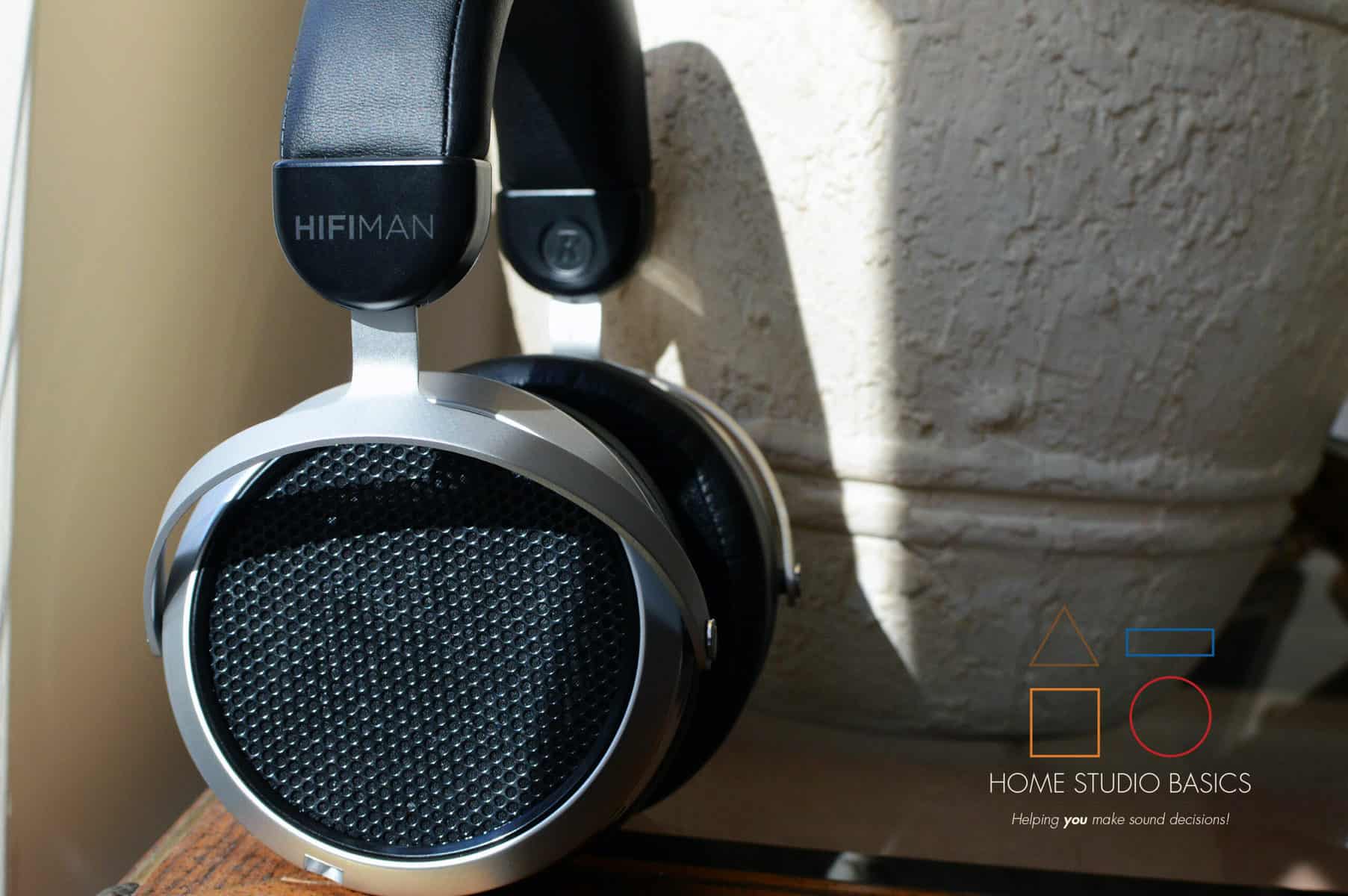
Presentation
The technical performance of the HE400se is what I’d consider the new baseline for so-called “audiophile” headphones. That title previously belonged to the Sennheiser HD6X0 lineup (granted, I have not heard the new HD560S). Compared to headphones below this baseline, the HE400se’s resolution, clarity, instrument separation, and dynamism is a step above. That said, it is a baseline. The HE400se definitely won’t be blowing anyone away with its performance if you’ve already had something better. What is impressive is the price that this performance comes in at.
Of note is the soundstage of the HE400se. I like it. It feels open and provides plenty of space for instruments to play around in. There’s good width to it and more importantly, it has a small helping of depth that really adds another dimension to the sense of stage. The HE400se’s imaging does a good job in allowing instruments to layer three dimensionally on top of each other without fighting on the same 2D plane. It helps the HE400se to have solid instrument separation and clarity especially when coupled with good note definition. While resolution isn’t particularly outstanding, detail retrieval on the HE400se is surprisingly pretty good. Tiny individual musical passages that languish in the background tend to get uncovered and highlighted.
Comparison to the Sennheiser HD600:
The ubiquity and performance of the HD6X0 series headphones make them a great comparator for any headphone and it’s no exception here. Price wise, they aren’t too far off the HE400se. Used HD600s can be had <$200 while new HD6XXs go for $200-220 on (Mass)Drop. I’ve long considered these HD6X0 headphones one of the best values you can get in personal audio especially if you go the used route. But with the release of the cheaper still HE400se, they just might topple that throne.Starting from the bass, it’s hard to say which I prefer. The HD600’s subbass doesn’t extend as far and it is slightly sluggish with less finesse and clarity. However, it does have a more natural tone and oomph with a minor elevation over the HE400se. Mids are mellower and more organic on the HD600 without the dryness of the HE400se. The HD600’s mids are able to make the tone of every instrument play nicely with each other with no one outstanding instrument. As for the treble, I’ll have to give it a tie here. The HE400se has a greater brilliance and airiness that lightens up the sound, but the tizzy hats/cymbals do stick out like a sore thumb. The HD600 sounds comparatively deadened in this region but make up for it by being inoffensive and balanced. In summary, the HE400se has better clarity but weaker timbre.
Where the HE400se pulls ahead of the HD600 is in its staging. The openness of its presentation is a breath of fresh air compared to the HD600’s closed in, 3-blob sound. The added width and depth of the soundstage on the HE400se makes it more comfortable to listen to as it brings along greater instrument separation and layering. The HD600 would definitely benefit from the staging the HE400se has. Instruments on the HD600, particularly in the bass/lower mids, can sometimes sound like they’re a little congested. I think greater treble brilliance the HE400se has helps offset this issue.
Resolution and nuance on both headphones are fairly similar to each other, with the HD600 taking an edge. I do think the HE400se wins out on detail retrieval since my perception of that quality is enhanced by better staging. Dynamic ability is also pretty much on par on both. While they’re a solid step up from anything below the aforementioned performance baseline, neither are truly outstanding.
Personally, I’d take either on a given day. I really do like the HE400se greater clarity and staging despite its minor tuning flaws. But if I had to pick one to keep, I’d go the HD600. The importance of having a reference dynamic driver in my collection cannot be stated loudly enough.
What is a magnetostat?
The magnetostatic operating principle is based on a very thin membrane that oscillates between permanent magnet rods. A wafer-thin wire in the shape of a snail is applied to this membrane, through which the sound flows. This wire is attracted or repelled by the surrounding magnets, according to the orientation of the impulse voltage, and thus causes the membrane to vibrate.
The hallmarks of this system are a very fine resolution of the high frequencies, natural music reproduction and a differentiated dynamic range. There is a great deal of effort in development and production behind all this, which is usually reflected in the high price of the units. This is one of the reasons that we’re looking forward to the unit being tested here, as it only costs about 169 Euros.
Timbre
Perhaps the best reason to invest in a planar headphone like the 400se is its Timbre; or, how an instrument may sound in real life vs. the way it sounds through a device.
In other words, its unique tone.
You may notice that cheaper headphones tend to sound decent, but they don’t give you any sense that you’re experiencing the music in an actual environment.
Of course, this is more prevalent in closed backs than open ones, but still, there are some closed backs out there that mimic the effects of open headphones – namely Sony’s MDR-Z1R, The Status CB-1, AKG’s K550/553, The Beyerdynamic DT770, etc.
The AKG K702, one of my favorite dynamic headphones, comes close to achieving a somewhat planar-like sound but is still outperformed by both the DEVA and 400se.
With the 400se, instruments and voices are that much more natural and intimate. Listening to an artist like Sufjan Stevens is almost like being serenaded by him, rather than simply hearing his composition being played out through headphone drivers.
Should You Buy It?
Yes, with an asterisk. If you’re just looking to get into the hobby with a tight budget, there’s practically no other option for the price. Take the $50 – 70 you’d save with the HE400se over the HD560S/HD6XX and put that towards an IEM like the MoonDrop Aria and an amp. From a pure sound quality perspective, the HE400se is highly competitive with any entry level set or even a bit beyond. If you’ve never heard a good dynamic driver headphone before, you’ll likely not even notice some of the HE400se’s minor timbral issues.
Where the asterisk comes into play is that I think most people who do end up with the HE400se will look to sidegrade/upgrade relatively soon. The HE400se is good enough that it gives a nice glimpse into the world of truly better sound quality. But I was a little unsatisfied with the HE400se, like I could almost feel that there is something better to be had going a step up. Frankly, I’m pretty sure this is a ploy from HiFiMan to get people to buy the Sundara, especially when you consider the awful cable and cheap build on the HE400se. And while I don’t think the HD6X0 is necessarily a strict upgrade from the HE400se, it’s worth considering if you have the budget. The better build and more agreeable timbre may be worth it for some.
At the end of the day, while the HE400se may be compromised in some ways, perhaps the greatest testament to its sound quality is that it’s able to finally provide an alternative to the HD6X0 for audiophiles just beginning their long journey. Just make sure you get an amp for whichever you choose.
___
This is part one of review series where I will look at the HiFiMan HE400se, Sundara, and Ananda. So if you’re wondering where the comparisons to the Sundara are, tune in for upcoming reviews!
-FC-Construct
—
Buy the HiFiMAN HE400se for the best available price.
In practice
ADVERTISEMENT
The HE400se comes in a sturdy cardboard box that includes a silver interchangeable connection cable with a 3.5-to-6.3-mm jack adapter. The ear cups connect via a double-ended cable with 3.5 mm mini jacks. Finally, this minimalist package is completed with a certificate featuring a serial number and the service contacts.
The ear cup housing is made of silver aluminium, with removable soft pads covering the insides and open-pore metal grilles on the outsides. To adapt to the shape of the head, the circumaural ear pads, with velour on the front, faux leather on the outer edge and perforated faux leather on the inner edge, have been finished separately so that on the front, the padding material is thinner than on the rear side. This ensures not only a better fit but also better external closure.
The padded headband, made of black faux leather, wraps around the upper semi-circular rounded headrest and connects the ear cups via aluminium brackets at the sides, using screws. The contrast of black leather and silver aluminium makes these headphones eye-catching. In both look and feel, this device appears robust and has stable connection points, which bodes well for durability.
These headphones fit comfortably and tightly, enabling portability with lots of movement. Their good fit is supported by the adjustable headband. The padding provides a comfortable ear and head support that makes listening to music for several hours a pleasure.
The connecting cable, on the other hand, seems unwieldy; its stiff and twisting shape is annoying, and, unfortunately, at a length of 1.04 m, it is only intended for portable use. It would have been desirable to have a second cable suitable for enjoying music at home so that your head does not have to be so close to your home stereo system.
Sound
First of all, I’d like to point out that in the age of in-ear systems, it was really fun to wear good old fashioned headphones that sit over your entire ears again. The unobtrusiveness and inconspicuousness of said in-ears have a degree of modernity, but on the other hand, they also lack a certain something. This sensation does not occur with over-ear headphones and reminds me of my first experiences with high-quality headphones.
For our sound test, the HE400se were connected to different sources. A studio preamp with a well-designed headphone amplifier (Funk MTX Monitor), to a smartphone (Samsung Galaxy S7) and a DAW converter with integrated headphone amplifier (RME Fireface UFXII)
It quickly became apparent that these HiFiMan headphones need a good helping of output volume to get warmed up. So our experience of the sound when using a smartphone remained rather restrained. However, listening to music with the powerful wireless MTX monitor and the RME converter was a lot of fun.
One of the first impressions was of a calm and relaxed sound. The bass range delivers the necessary punch but without overemphasis. The mids fan out detailed sound information, and the highs sound unobtrusive but illuminating. A slight boost in frequencies between 3 and 6 kHz provides extra clarity and precision in the upper-frequency spectrum without sounding sharp.
The solitary voice of Malia in “Celestial Echo” (in collaboration with Boris Blank) appears vivid and embedded in the overall sound. The spatial contours are clearly outlined, and the stage is well illuminated. However, the presentation of the dynamics seems somewhat limited. There could be more expansion in the quieter and louder areas. The same applies to the transients, which generally lack a little emphasis.
Nevertheless, it is a pleasure to listen to this relaxed sound presentation, to float through spatial gradations and to be carried away by the musical performance.
Soundstage
Sennheiser’s mid-fi line of 580/58X/600/650/6XX are all known to have narrow imaging and “okay” placement.
The separation of instruments’ sounds is excellent, but at times they feel congested and don’t occupy the space as well as I’d like.
In other words, they are a bit too close together and need to be spread out more.
HIFIMAN’s mid-fi lineup has always provided better imaging and placement, with wider staging, better width, and more depth front to back.
In other words, instruments and sounds have more room to breathe which helps immensely with detail retrieval.
I can pick out individual soundscapes and backing instruments a lot better with a 400se, DEVA, etc. than I can with headphones in Sennheiser’s line.
The music also feels grander, providing that “out of your head” sensation that sometimes makes you feel as if you’re in an actual recording space or even a live venue (though that effect has been grossly overexaggerated by everyone and their Grandma).
If headphones like the HD600 rarely give you that sensation, HIFIMAN headphones do so more frequently while something like a K702 does it very frequently.
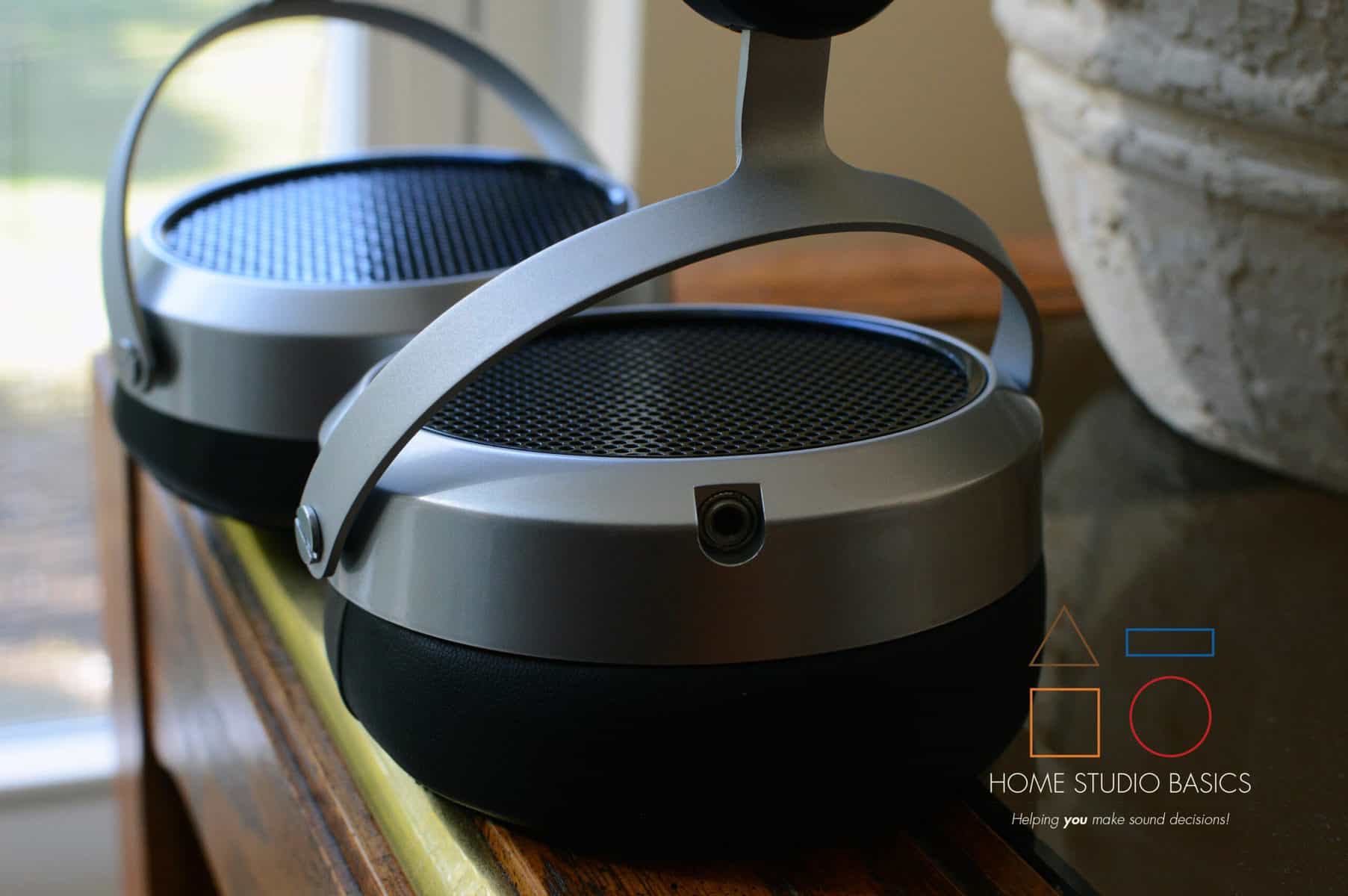
Дизайн и удобство ношения
Во внешнем виде в единое целое слились и старый, и новый поход HiFiMan, подарив покупателям весьма забавный гибрид. Нижняя часть наушников явно осталась от классических моделей: круглые пластиковые чашки серебристого цвета, металлическая решётка, тут облик похож на то, что мы уже видели не один год. Единственная особенность — вилки крепления чашек, традиционно позволяющие вращение вокруг двух осей, сделаны из пластика, что, конечно, не особо внушает доверие. Хотя жалоб на поломки этого узла я в Интернете не видел, но относиться к HE-400S надо поаккуратней. Верхняя же половина наушников сделана в более современном стиле и напоминает HE-1000. Оголовье П-образной формы, выполнено из пружинящей стали. На нем закреплены две подвижных детали из пластика, соединённые «наголовником» из кожзаменителя, именно двигая его крепление и можно регулировать размер данной модели. За месяц использования я понял, что это достаточно удобный и простой способ регулировки. Собраны наушники без оглядки на цену, никаких огрехов и недоработок нет.
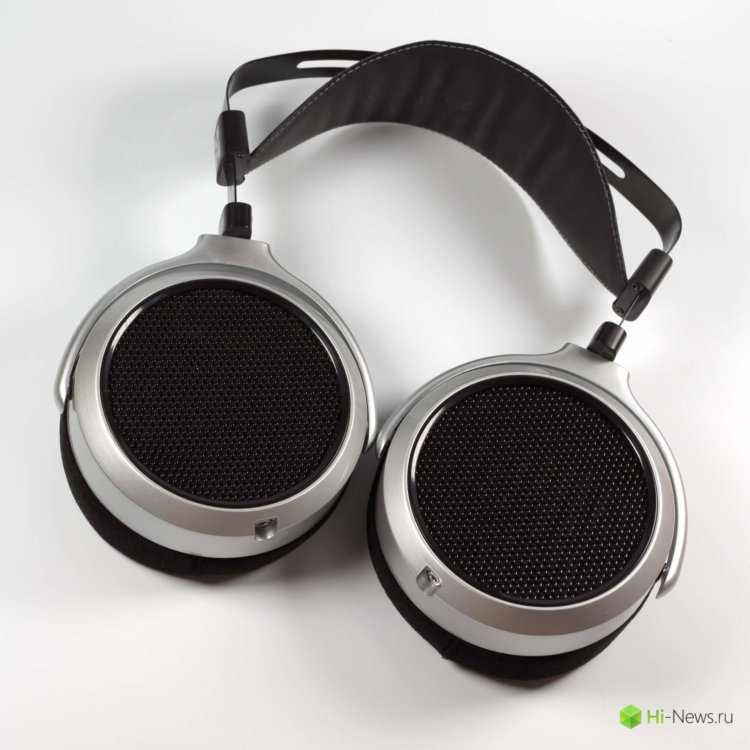
их замена на Focus Pads
Модель эта полностью открытая, поэтому она мало подойдёт для улицы или офиса, где работают другие люди: шум будет проникать внутрь, а ваша музыка также без проблем будет слышна всем окружающим. Данные наушники явно ориентированы на домашнее применение.
Претерпела изменения и система подключения кабелей, на смену закручивающимся разъёмам, знакомым по предыдущим моделям, пришли 2,5 мм джеки. В целом это положительный шаг, упрощающий замену проводов. Комплектный кабель достаточно короткий, около полутора метров, в забавной черно-белой тканевой оплётке. Он немного шумит от трения, но в целом вопросов особо не вызывает.
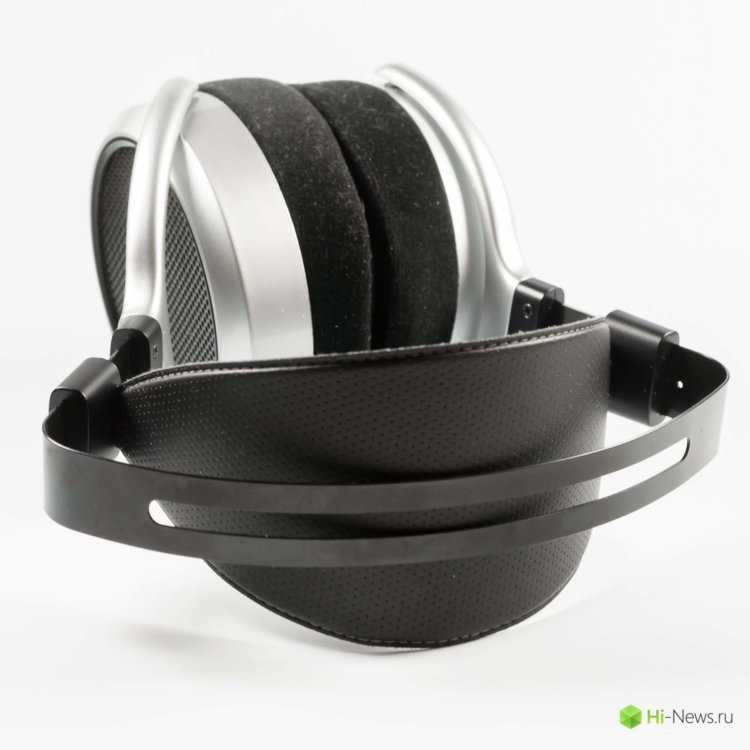
Specifications
- Price: Check Amazon! | Check Apos Audio!
- Frequency Response: 20Hz – 20kHz
- Impedance: 25 Ohm
- Sensitivity: 91dB
- Weight: 390g
The road traveled with HIFIMAN has been a long and winding one, filled with lots of ups and quite a few downs.
Iterations, re-iterations, stealth revisions, Quality control issues, failed partnerships, build updates/re-updates, and an admirable pursuit of never-ending improvement has brought us here.
Enter the HIFIMAN HE400se.
In some ways this is sort of like a redemption song for the but that already happened with the DEVA in 2020.
No, this signifies something different.
In many ways, the introduction of the 400se feels like the end of hi-fi, at least in its traditional sense. In other words, how do people think about Hi-Fi vs. what it actually is to someone with a lot of experience?
It’s no secret that audio (specifically the headphone market) has changed quite dramatically over the years.
As with starting a home studio, it’s no longer complicated nor does it cost thousands of dollars to get up and running.
For as much as I’ve lamented the influx of new products at every turn, and the subsequent elitism that comes along with that, there is an upside to oversupply; it means that achieving great sound is more than possible for the average person with an average bank account.
The fact that so many people are trying to compete for what’s in your wallet is both terrifying and miraculous at the same time.
Your typical entry-level Amp/DAC combo sounds almost as good as something considered “High-end” and that’s most certainly a good thing if the goal is to save money while simultaneously drinking expensive scotch with your pinky out.
Tech Highlights
Driver
The HE400se is a full-size but lightweight large-diaphragm Planar Magnetic headphone that practically anyone can afford which can be driven by most sources adequately. I say most sources because these are happiest with lots of power. I would say drive directly with a good DAP yes, directly off a phone, no.
I measured the diaphragm of this driver and I got a more or less measurement of 80mm from the round diaphragm with silver traces. Each driver uses a 3.5mm TRS connection which uses the tip for the positive contact.
Configuration
The driver specs out as having a frequency response of 20Hz to 20 kHz, an impedance of 25 ohms with a sensitivity rating of 91dB SPL. The 91dB SPL sensitivity rating I think is the specification that holds back efficiency here.
If you go back just 5 years, it would have been somewhat crazy to think you could get a full-sized Planar Magnetic headphone of this quality for a buck and a half.
Most of the cost in making planar magnetic headphones goes into the magnet assembly and driver manufacturing process due to the high levels of precision and consistency that must be obtained. So let’s talk about the magnet structure a bit.
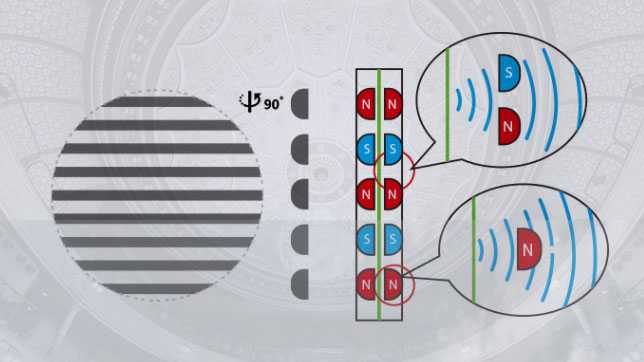
Stealth Magnet Design
Some years back, lots of people started installing a modification on their planar cans to improve the sound by minimizing refractions. Manufacturers such as Audeze brought their own version in with Fazor technology with sonic improvements over their original non-Fazor editions.
HIFIMAN came up with a similar but simpler solution over the last few years and it is indeed implemented on the HE400se. Hifiman calls this concept the Stealth Magnet Design.
By simply controlling sound waves passing through the magnet structure, HIFIMAN was able to eliminate refractions and sound interference by reducing wave diffraction turbulence. This is the equivalence of sound bouncing off walls and objects from a speaker to then reach the ear off phase and in different times causing massive phase issues and sound purity degradation.
What HIFIMAN did here was to make the magnet assembly almost sonically invisible as to not interfere with sound waves coming off the diaphragm as it goes into the ear cup and to me, HIFIMAN was successful.
